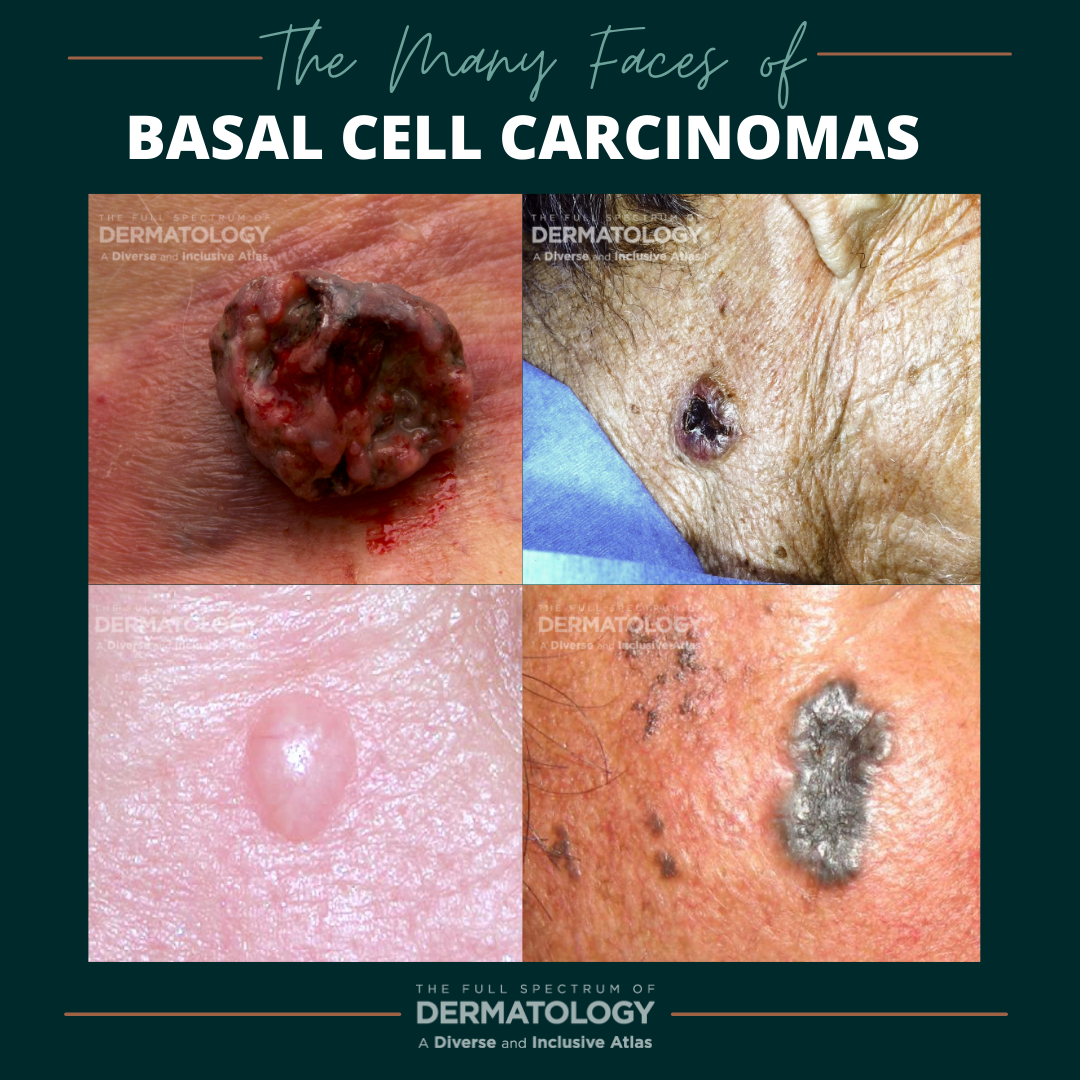Our new series, “The Many Faces of”, showcases side-by-side images of some of the most commonly seen dermatology conditions in an array of skin tones and briefly highlight nuances in clinical presentation. All images featured in the series are part of The Full Spectrum of Dermatology: A Diverse and Inclusive Atlas, a resource developed by co-editors Misty Eleryan, MD, MS, and Adam Friedman, MD, and published by SanovaWorks and Educational Testing & Assessment Systems.
We continue our series with a look at Basal cell carcinomas (BCCs).
Basal cell carcinomas (BCCs) have a wide variation in presentation ranging from pearly pink papules to deep erythematous brown nodules with central ulceration or even variegated brown-gray plaques with rolled borders.
 Basal cell carcinoma is the most common type of skin cancer, usually occurring on sun-exposed areas of the skin. The nodular variant, which accounts for over half of BCCs, classically presents as a pearly pink papule with prominent arborizing vessels. Rolled borders and ulceration are characteristic features seen in all subtypes of BCCs.
Basal cell carcinoma is the most common type of skin cancer, usually occurring on sun-exposed areas of the skin. The nodular variant, which accounts for over half of BCCs, classically presents as a pearly pink papule with prominent arborizing vessels. Rolled borders and ulceration are characteristic features seen in all subtypes of BCCs.
Nuances to Highlight
BCCs in darker skinned patients are often pigmented and nodular, leading to misdiagnosis as seborrheic keratoses, melanoma, or nevus sebaceous. Given less prominent vasculature, identification of darker pigment within or throughout a pearly nodule or papule can aid in differentiating BCCs in this population.
Further Reading
If you would like to learn more about diagnosing Basal Cell Carcinomas, check out the following articles published in the Journal of Drugs in Dermatology:
Acknowledgements
We thank co-editors Misty Eleryan, MD, MS, and Adam Friedman, MD for reviewing the content of this article.
Reference
Eleryan, Misty, and Adam Friedman. The Full Spectrum of Dermatology: A Diverse and Inclusive Atlas. SanovaWorks, 2021.
NOW AVAILABLE! Visit the online image gallery for The Full Spectrum of Dermatology: A Diverse and Inclusive Atlas, where you will find high-quality images that you will be able to use, free of charge, for non-commercial educational purposes. Access the online gallery here.
The Full Spectrum of Dermatology: A Diverse and Inclusive Atlas DIGITAL EDITION is available for purchase here.
Did you enjoy this article? You can find more here.


